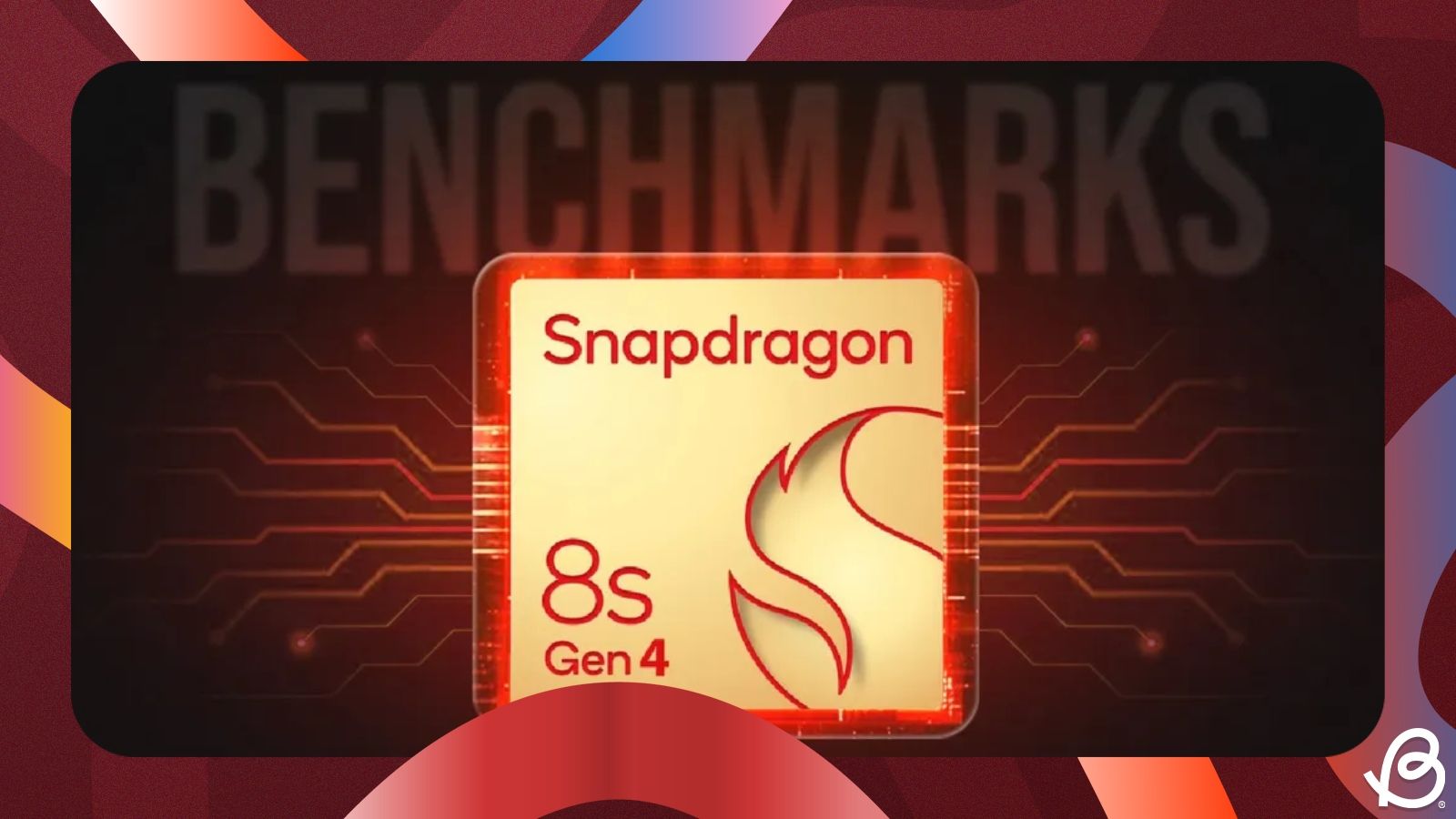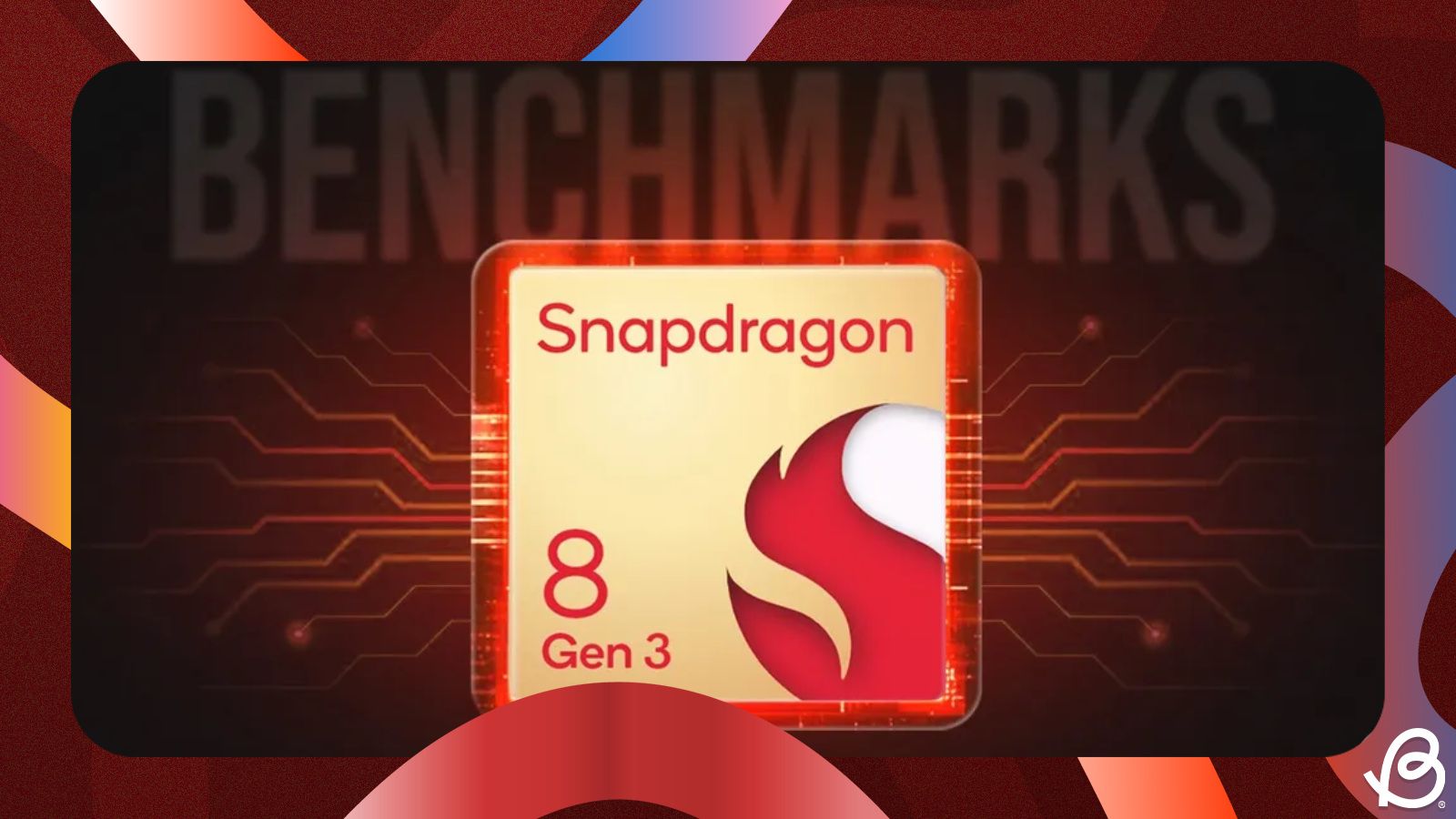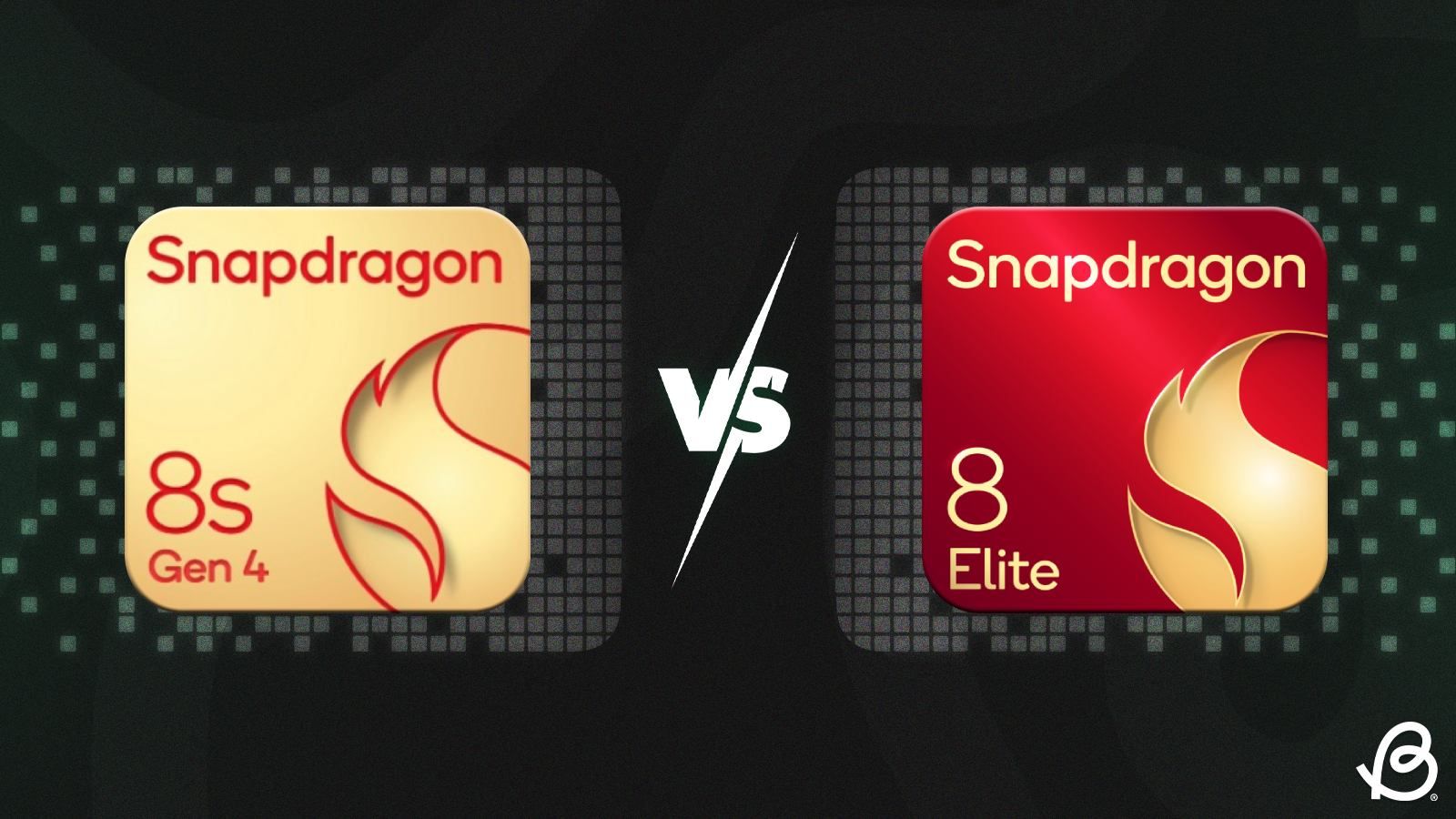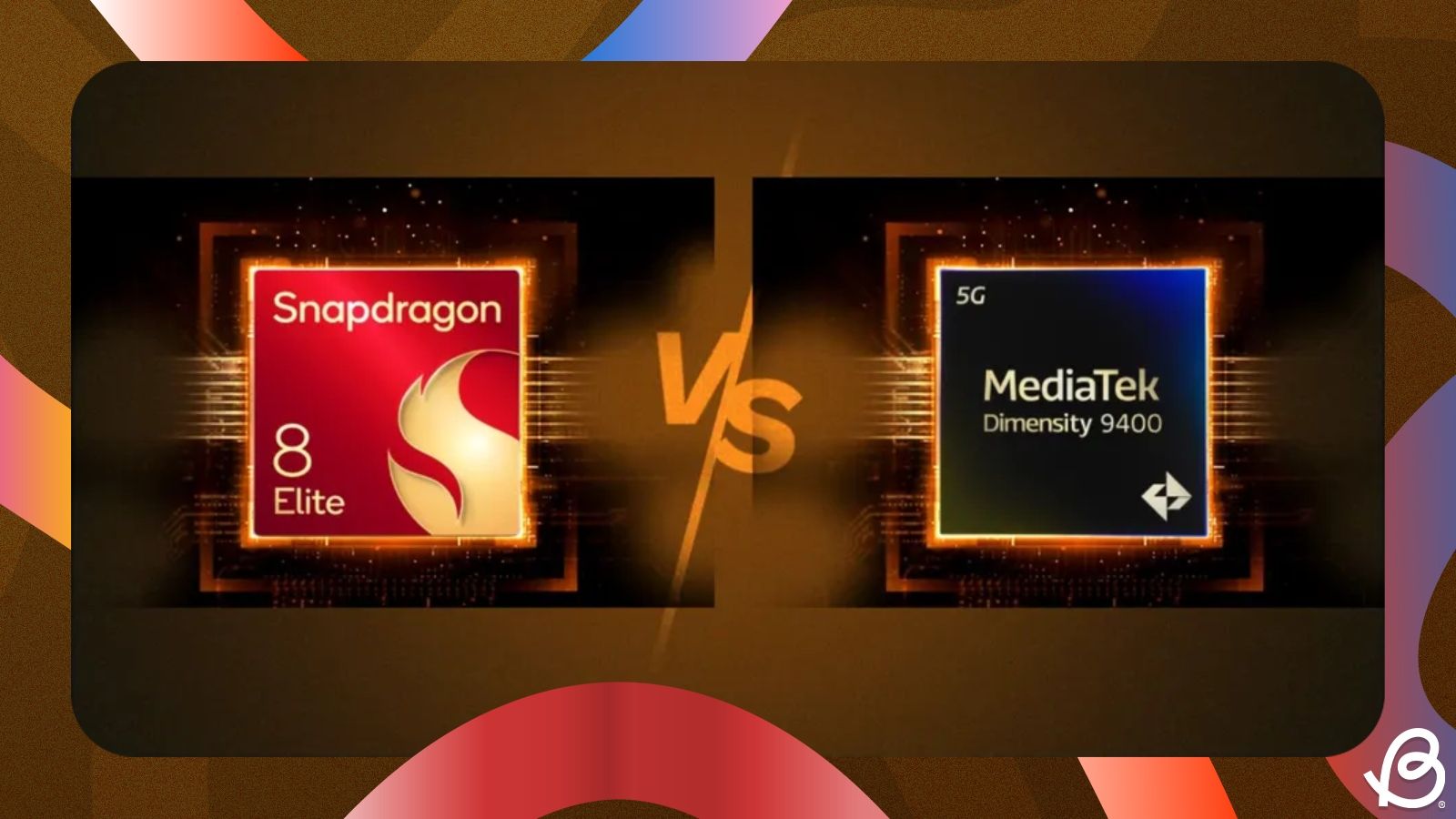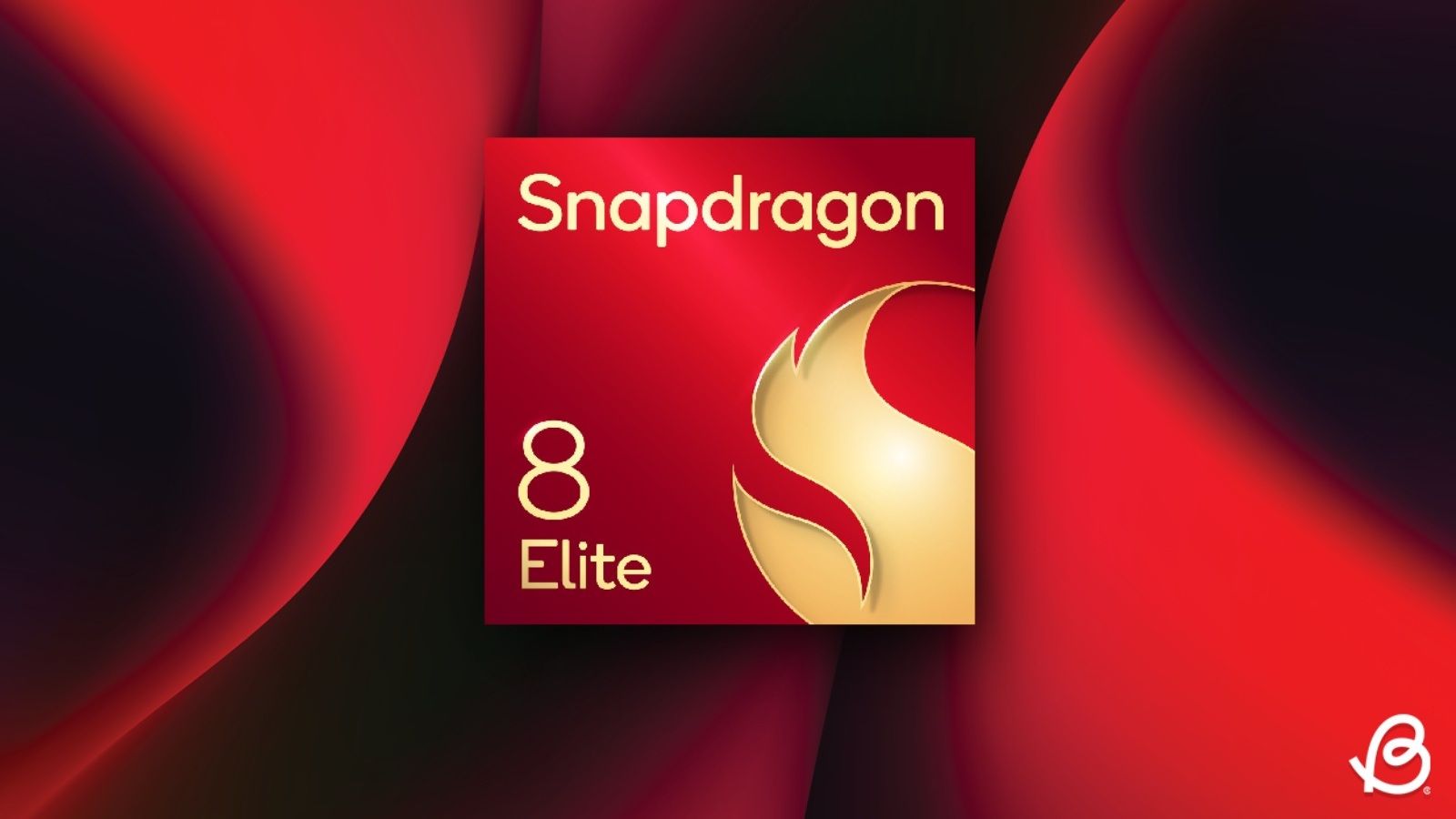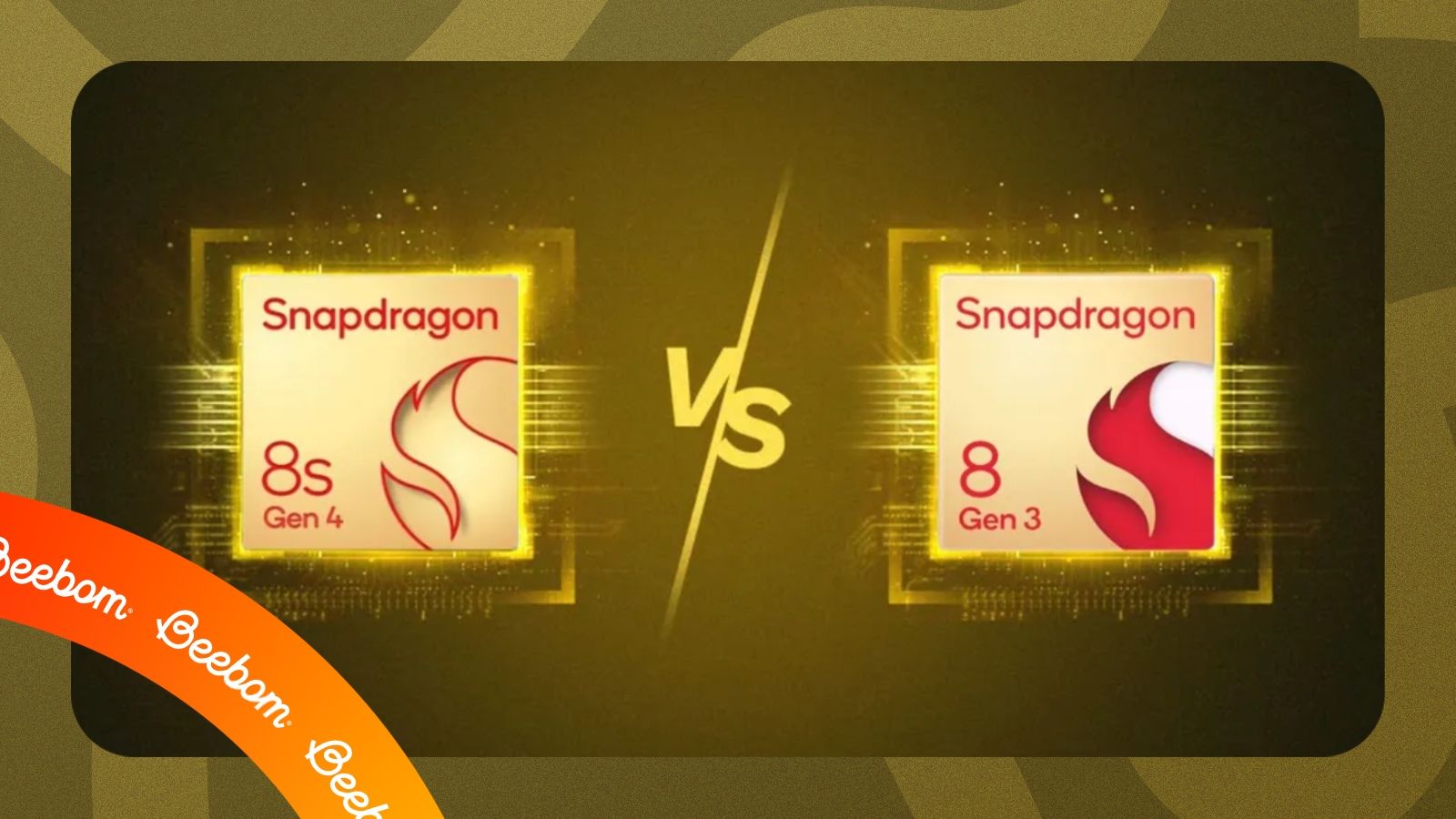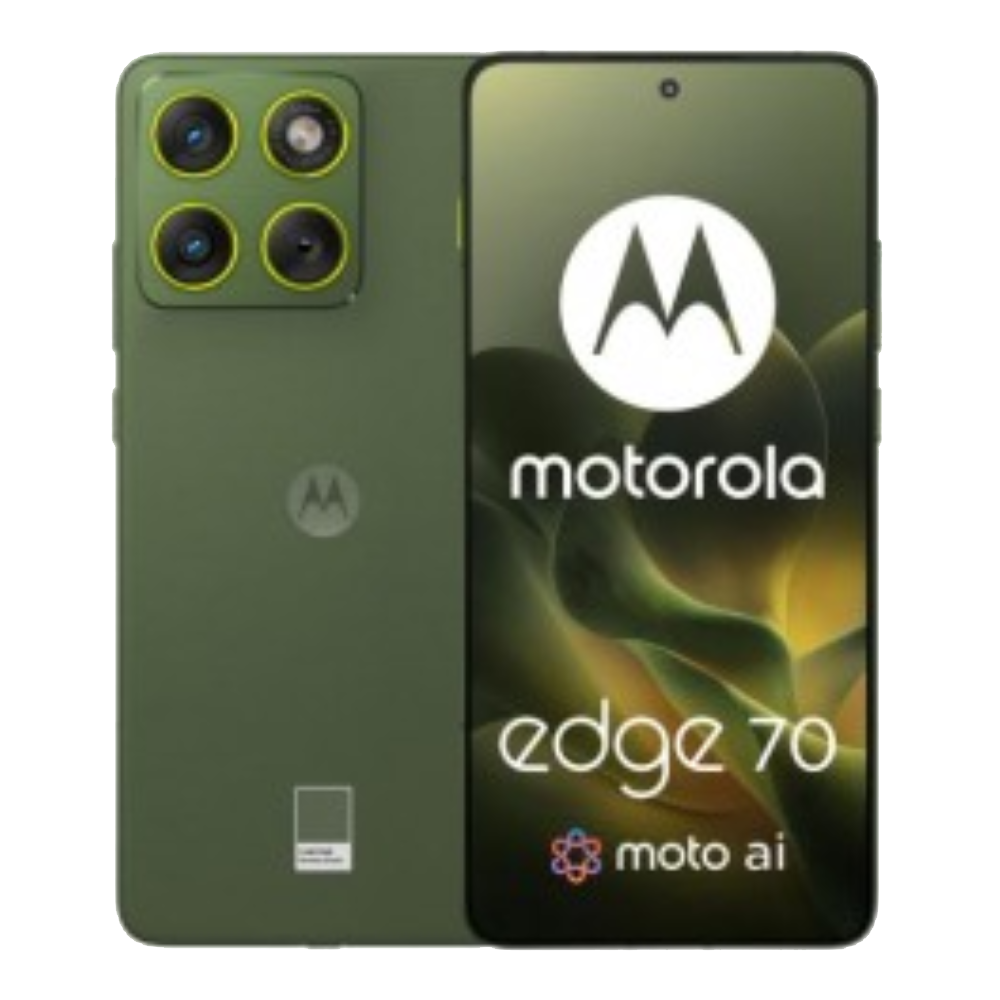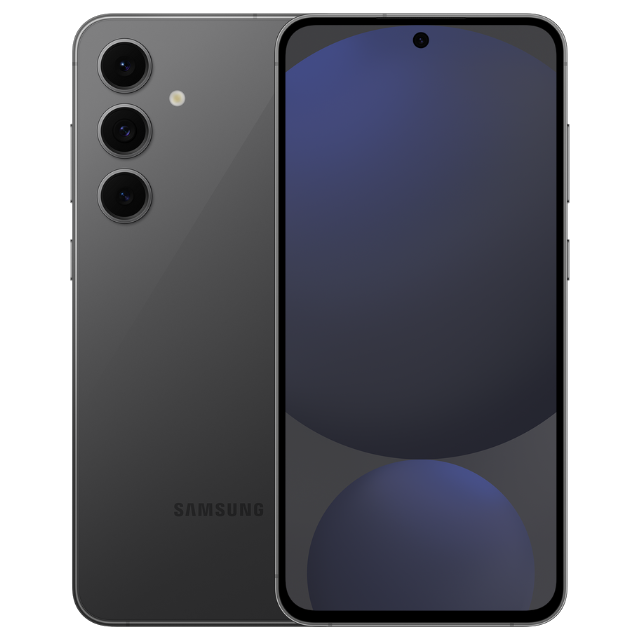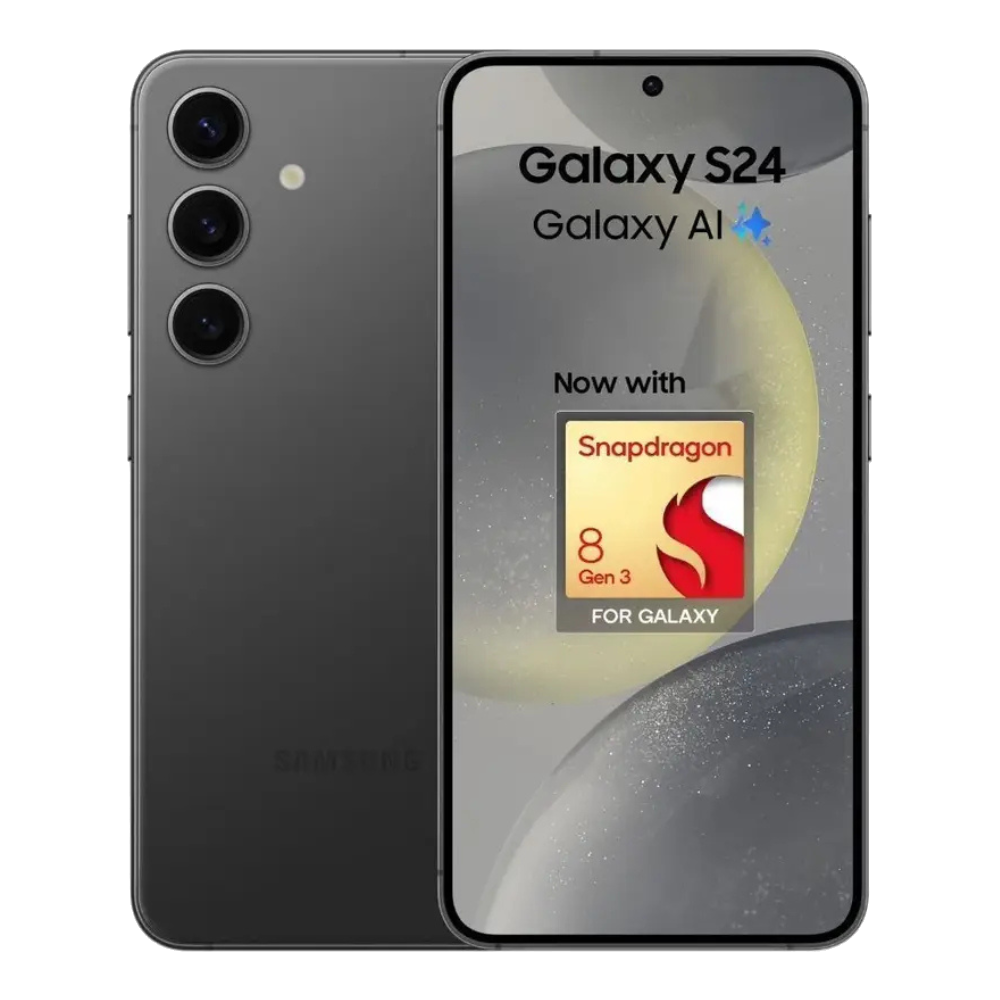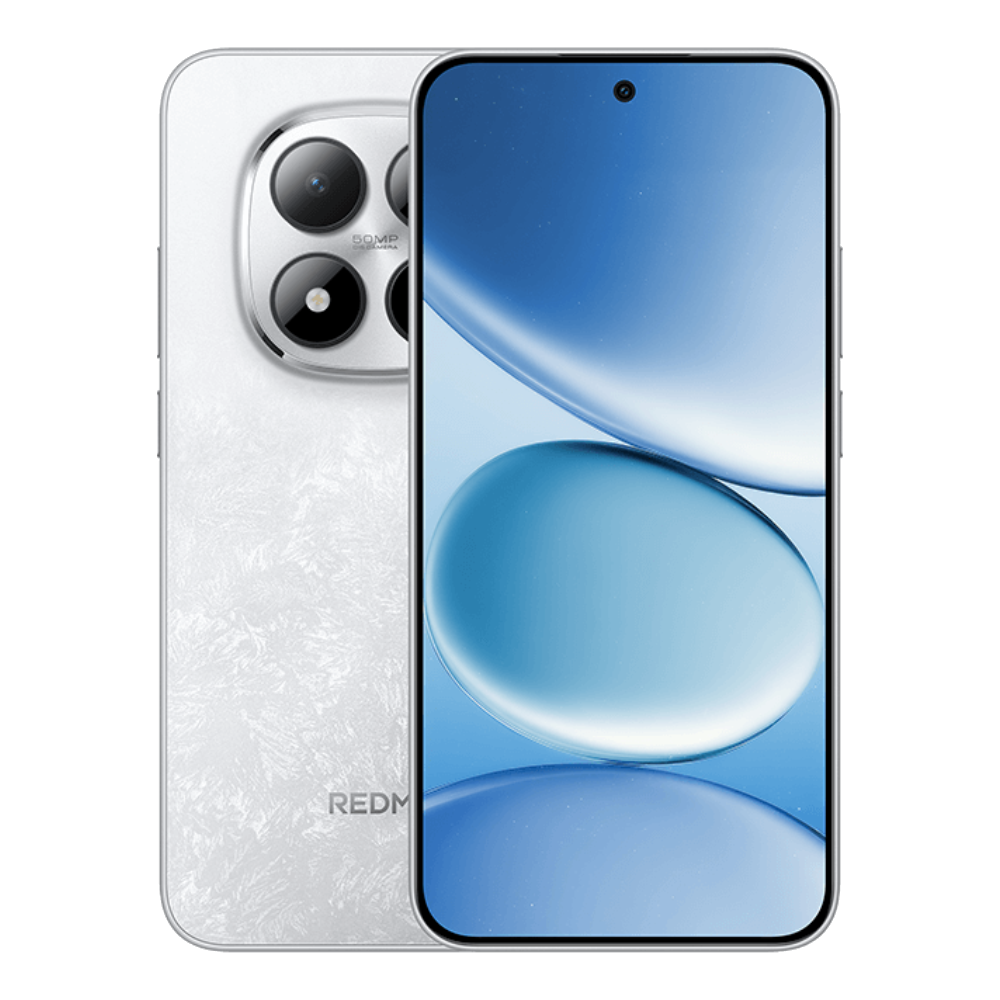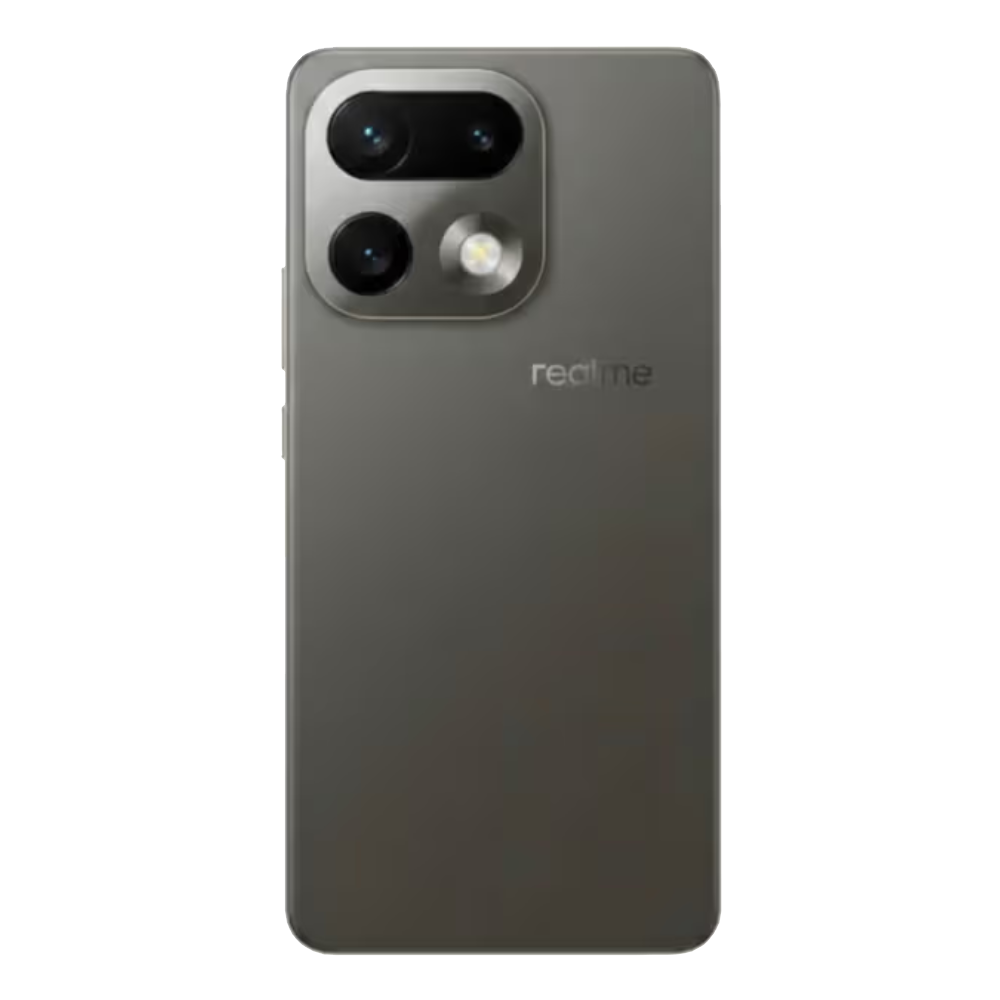Qualcomm released the Snapdragon 8s Gen 4 processor in April 2025, a successor to the Snapdragon 8s Gen 3. Interestingly, the chipmaker included its Kryo CPU cores instead of the new Oryon CPU on the latest version. We benchmarked the chipset on a number of tests including AnTuTu, Geekbench, 3DMark, etc., to evaluate its CPU and GPU performance. So without any wait, let's check out the benchmark results for the Snapdragon 8s Gen 4 SoC.
Snapdragon 8s Gen 4 AnTuTu Score
AnTuTu Benchmark | Score |
Snapdragon 8s Gen 4 AnTuTu Score | 2,104,905 |
CPU | 483,422 |
GPU | 891,935 |
Memory | 388,619 |
UX | 340,929 |
In our first AnTuTu benchmark, the Snapdragon 8s Gen 4 scored 2.1M points, crossing the 2-million mark. Its octa-core Kryo CPU achieved 483.4K points, and the Adreno 825 GPU got an impressive 891.9K points. While it doesn't match the Snapdragon 8 Elite in performance, the Snapdragon 8s Gen 4 easily matches 2023's flagship, the Snapdragon 8 Gen 3.
Snapdragon 8s Gen 4 Geekbench Score
Geekbench 6 CPU | Snapdragon 8s Gen 4 |
Single-core | 2,158 |
Multi-core | 6,989 |
In the CPU-bound Geekbench test, the Snapdragon 8s Gen 4 managed to score 2.1K in the single-core test and 6.9K in the multi-core test. Qualcomm has housed Kryo CPU cores on the Snapdragon 8s Gen 4 instead of custom Oryon cores which are available on the flagship, Snapdragon 8 Elite. As a result, you don't get flagship-level CPU performance, but it's no slouch either. It matches the Snapdragon 8 Gen 3 CPU performance with ease.
Snapdragon 8s Gen 4 CPU Throttling Test
CPU Throttling Test | Snapdragon 8s Gen 4 |
Maximum Score | 549,579 GIPS |
Average Score | 485,827 GIPS |
Minimum Score | 414,382 GIPS |
Throttling Percentage (Higher is better) | 80% |
Next, in the 15-minute CPU Throttling test which evaluates the CPU on sustained workload, the Snapdragon 8s Gen 4 posted amazing results. It managed to run the CPU at top clock speeds for a straight five minutes, before down-clocking the frequency slightly. Overall, it throttled to 80% of its maximum performance, meaning you will see top-notch CPU performance over a longer period, even when all CPU cores are engaged under a heavy workload.
Snapdragon 8s Gen 4 3DMark Score
3DMark Wild Life Extreme Stress Test | Snapdragon 8s Gen 4 |
Best Loop Score | 2,845 |
Lowest Loop Score | 2,180 |
Stability | 76.6% |
The Snapdragon 8s Gen 4 features the Adreno 825 GPU, which is said to be below the Adreno 830 GPU. So to test its graphics capabilities, we ran the 3DMark Wild Life Extreme Stress test, and it got the best loop score of 2.8K with an impressive stability of 76.6%. That said, after 10 loops, the GPU throttled its performance and posted the lowest loop score of 2.1K. I won't call it a flagship-level GPU, as it's decidedly weaker than the Adreno 830 GPU.
Snapdragon 8s Gen 4 | 3DMark Solar Bay | 3DMark Steel Nomad Light |
Overall Score | 4,615 | 1,030 |
Average FPS | 17.55 FPS | 7.64 FPS |
In the 3DMark Solar Bay test which evaluates the ray-tracing capability, the Snapdragon 8s Gen 4 GPU got an overall score of 4.6K with an average FPS of 17.55. And in the graphics-intensive 3DMark Steel Nomad Light test, the GPU achieved 1K points with an average of 7.64 FPS.
Snapdragon 8s Gen 4 Speedometer 3.0 Score
Finally, in the Speedometer 3.0 test which measures web browsing performance, the Snapdragon 8s Gen 4 scored only 12.5 points. It's much lower than the Snapdragon 8 Elite. It shows that Qualcomm's Nuvia-designed Oryon CPU is much more powerful than the Kryo CPU.
Benchmark Gallery
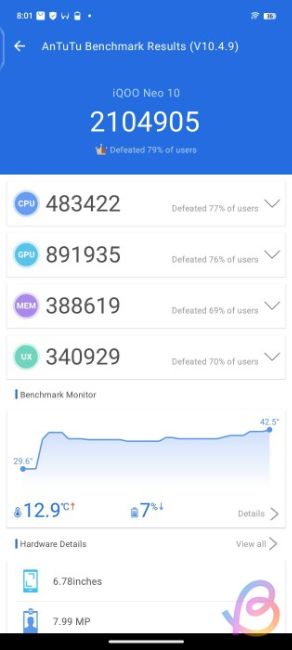
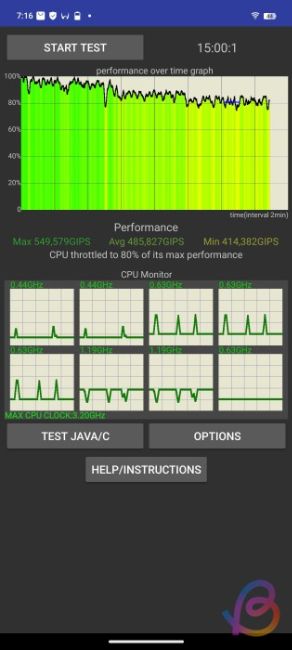
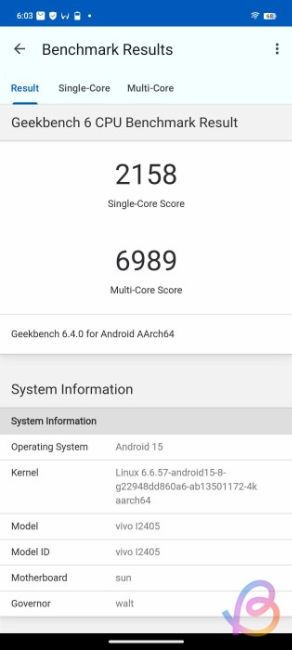
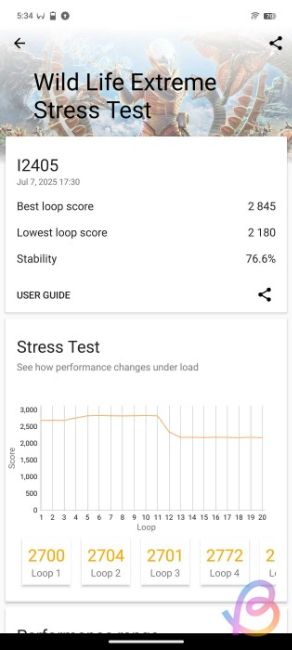
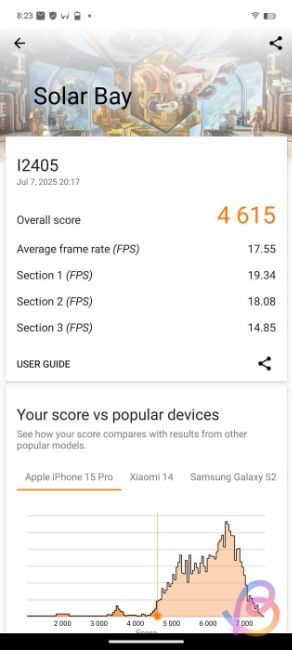
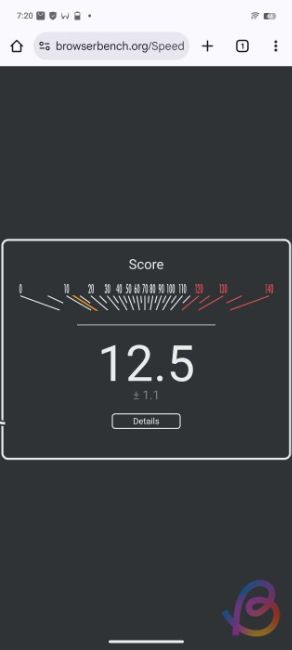
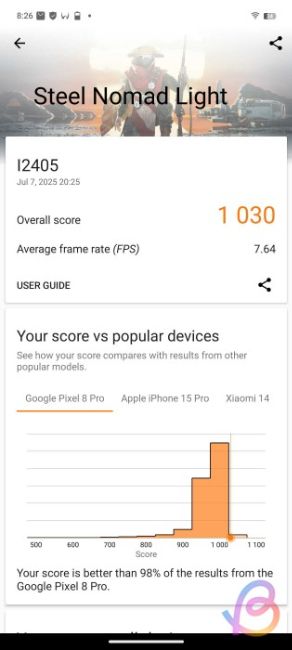
Snapdragon 8s Gen 4 Specs
Specs | Snapdragon 8s Gen 4 |
Process Node | TSMC’s 4nm |
CPU | 8-core Kryo CPU |
CPU Cores | 1x Cortex-X4 (3.2GHz), 3x Cortex-A720 (3.0GHz), 2x Cortex-A720 (2.8GHz), 2x Cortex-A720 (2.0GHz) |
GPU | Adreno 825 GPU |
Storage and Memory | UFS 4.0, LPDDR5X memory, up to 4800MHz |
NPU | New Hexagon AI Engine, On-device multimodal AI support |
ISP | 18-bit Triple AI Spectra ISP, Up to 320MP photo capture, 4K HDR video at 60 FPS |
Modem | Snapdragon 5G modem (Sub-6 GHz only), Up to 4.2 Gbps Peak Download |
Connectivity | Wi-Fi 7, Bluetooth 6.0 and UWB |
Verdict
All in all, it would be unwise to call the Snapdragon 8s Gen 4, a flagship chipset of 2025. If anything, it matches the performance of the Snapdragon 8 Gen 3 CPU, which was released in 2023. But let's not ignore what it does well. The Snapdragon 8s Gen 4 still packs a punch, delivering competitive CPU and GPU performance, and while it may not be a beast, you get a reasonably capable chipset with improved efficiency.


